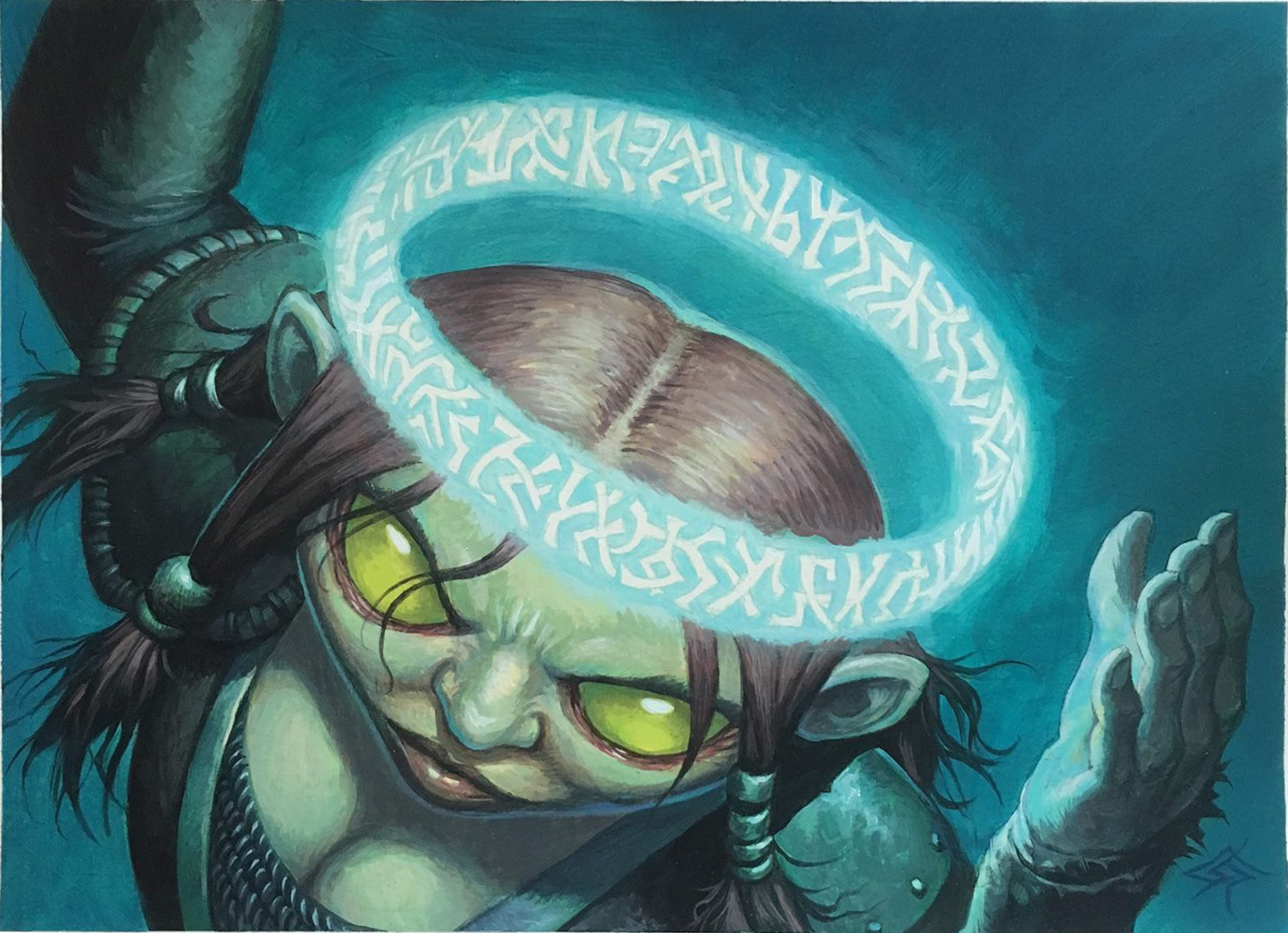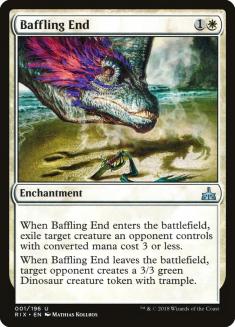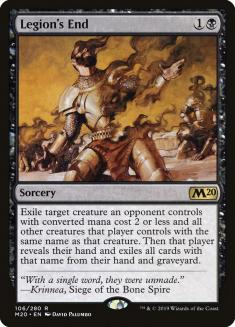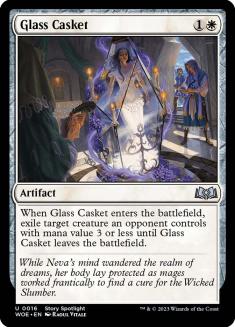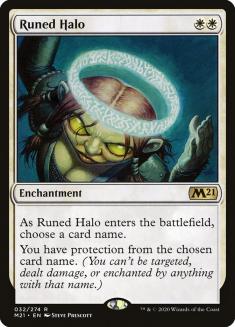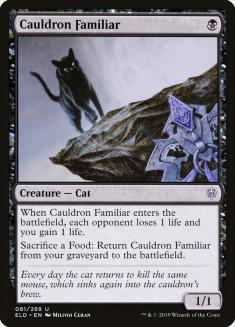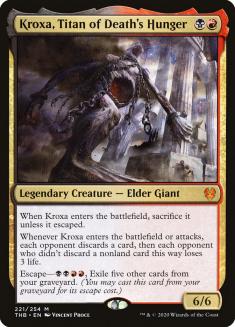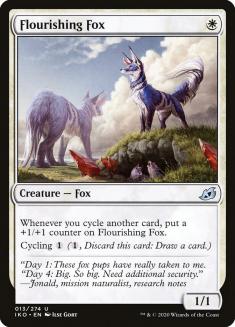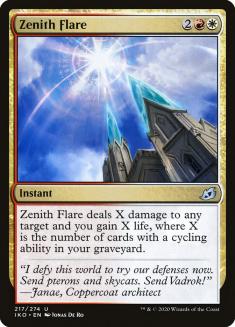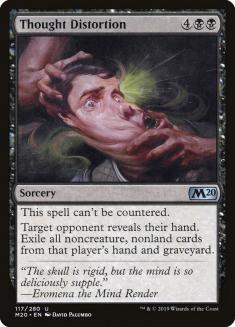In almost every Standard format in recent memory, some decks have made themselves creatureless in order to force their opponents to draw blanks in Game 1. This is worthwhile since even a few blank draws can easily swing the outcome of a game. Since playing no removal at all is generally not an option, decks have typically opted for cards like Domri’s Ambush. It’s much rarer to face an opponent with neither creatures nor planeswalkers, and even if the opposing deck only has a few, the ability to eventually have a target is invaluable. Similar logic applies to burn spells and cards like Brazen Borrower.
Another staple of recent formats has been cheap removal that exiles. These days, there’s a critical mass of recursive, indestructible, or otherwise hard-to-remove threats (I believe the kids would refer to them as “sticky”). Baffling End, Legion’s End and Glass Casket are all examples of this effect. While decks sometimes include small numbers of these cards in their maindecks, they’re more commonly relegated to the sideboard. To understand why this is so, read the paragraph above.
But if there were a removal spell that could both handle sticky threats and provide some sort of value against creatureless decks, I think it would have a high probability of becoming an archetype staple. Luckily, there’s just such a card in Core Set 2021. But I’m not referring to some spicy new card. I’m referring to a reprint:
Let us begin by discussing what Runed Halo is not. Runed Halo is not a good card for aggressive decks. Creatures that you name will still be able to block your creatures and damage them with abilities. It also will not protect your planeswalkers, and thus gets better the less you rely on them. Control finishers get along fine with the card, since they are generally either large, evasive or both.
Runed Halo cannot protect you from spells and abilities that do not target or damage you, such as Cauldron Familiar or Kroxa, Titan of Death’s Hunger. Finally, it cannot protect you from tokens, notably those produced by Shark Typhoon. This is because they are not cards, and thus cannot be named. (If your opponent somehow ends up with a token that is a copy of a card, Runed Halo will do a fine job stopping the damage from that.)
The ceiling on Runed Halo is a role as an archetype staple in control decks that can count on having two white sources early in the game. That is roughly what it was when it was first printed in Shadowmoor. The floor is that it sees marginal play only when the metagame shifts to favor it.
In creature matchups, Runed Halo is a supercharged Legion’s End that answers every creature with the chosen name regardless of converted mana cost and regardless of whether they are on the battlefield currently or drawn later. This means that every time you cast a Runed Halo, you increase the odds of your opponent later drawing a dead card. As noted above, matches of Standard are often decided by a few dead draws, so this effect is not to be underestimated. It also answers named creatures regardless of how sticky they are. Escape creatures, beware!
One important role it plays well in these matchups is answering both the body and the triggers of Mayhem Devil. While Jund Sacrifice decks use a variety of byzantine interactions to generate card advantage, they most often convert those cards into victory through the channel of Mayhem Devil. If you put it under the Halo, they must amass substantial additional resources to actually kill you. Sometimes, you can use this time to break apart their engine and win the game.
Boros/Jeskai Cycling decks struggle with the card more than most since they devote so much of their deck to cyclers. This means that they will cast their best cards very frequently, but also that they will draw duplicate copies of them more often. Both Flourishing Fox and Zenith Flare are vulnerable to Runed Halo, and if you manage to name both of them, the battle is more than half won.
In creatureless matchups, Runed Halo is not amazing, but will still often provide some value. For example, against Wilderness Reclamation, you can name the Explosion half of Expansion // Explosion. In most Reclamation decks, Explosion is the primary way to utilize the excess mana from Wilderness Reclamation. These decks could still manage to win by answering Runed Halo after drawing many cards, or using backup plans like Uro, but I think having Halo will sometimes allow you to snatch victory from the jaws of defeat.
For instance, if you have multiple lethal creatures on the battlefield, Halo might buy you the time you need to finish the job. I can also imagine some corner cases where a control deck has a ton of resources and can just grind through the opponent’s whole new hand if Halo stops the Explosion kill. Both of these scenarios are not likely, but the percentage definitely matters.
Against controlling decks, Runed Halo’s best usage will be to name discard spells such as Thought Erasure or Duress. But in a pinch, it could also name Uro or Dream Trawler (although those cards will still serve as Phyrexian Arena). This might also allow you to run them out of win conditions entirely in some situations. In the creatureless matchups in Standard, it would probably be correct to remove Runed Halo for Games 2 and 3. That said, the additional value in Game 1 over traditional removal should not be ignored.
Currently, Mono-Red Aggro in Ikoria Standard is heavily creature-based. If that changes, Runed Halo could help stabilize against those decks by naming various burn spells. Mono-Red Aggro in Pioneer, on the other hand, is heavily burn-based, and I think Runed Halo has a good chance of impacting that format as a result.
Those decks often rely on Eidolon of the Great Revel, which gets absolutely embarrassed by the Halo. How many burn spells can your opponent afford to cast if they’re the only one taking two damage per spell? Runed Halo is so effective against burn-heavy Red because it can either blank a burn spell or answer a creature for the bargain-basement price of two mana. Most cards in a control deck can do only one of those things, and drawing just enough removal is a constant problem for those decks as a result.
Runed Halo also seems like a strong option to me in Pioneer because of the existence of Underworld Breach decks. For those unfamiliar, this combo deck attacks control decks by using Fae of Wishes to find Thought Distortion out of the sideboard. Thought Distortion is uncounterable, so once it’s in the Breach player’s hand, the game is usually over. But Runed Halo completely blanks it. Thought Distortion is such a huge part of Breach’s plan in the matchup that I think there is a real chance it is worth leaving in Halo.
In both Modern and Pioneer, the decks that are going to make the best use of Runed Halo are planeswalker-light Azorius Control decks. It’s suboptimal to play more than two colors to maximize the chances of being able to cast Runed Halo on curve. Ideally, such a deck would contain no planeswalkers, but in both formats I think Teferi, Time Raveler is too strong to exclude. Teferi gets enough value up front that I think it’s possible to play both.
However, the single factor most likely to keep Runed Halo out of competitive Magic is the existence of little Teferi. I have also left Narset in the deck, because it doesn’t matter if she is protected after the first few turns. However, a 60-card deck that does not involve Yorion may be able to exclude her and thereby sidestep the problem. I have also chosen to include a few copies of Rewind, which also appears in Core Set 2021.
Creatures (4)
Planeswalkers (7)
Lands (17)
Spells (52)

Before I end this article, I want to talk a little about playing with Runed Halo. Sometimes, your opponent will control one copy of multiple creatures that are roughly equally threatening. In cases like these, you will need to consider three factors:
1. How easily do your other cards answer additional copies of this creature?
2. How many copies of this card are in my opponent’s deck in total?
3. Does my opponent’s play make it more likely for them to have one of them in their hand?
You can find out more about how to go about answering these questions by reading my article “Going All-In: Taking The Right Risks In Magic.” Overall, it is important to have a good understanding of the decklists in the format if you’re going to play Runed Halo. Knowing their precise list will help you strand more cards in their hand, in addition to just being good tournament preparation in general. Sometimes, knowing which cards they have four copies of as opposed to three makes all the difference.

